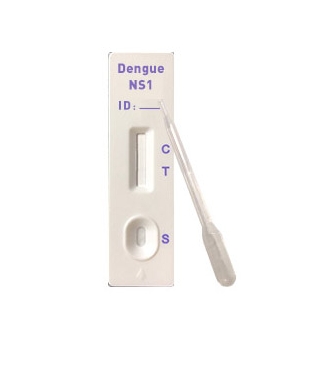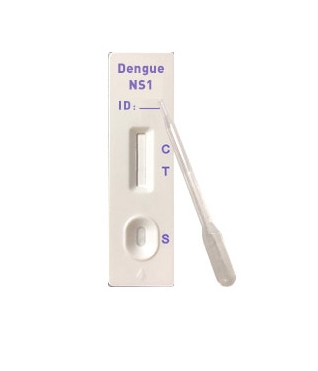Dengue fever is the most serious mosquito-borne viral disease in the world in terms of morbidity and mortality and economic costs. The virus is mainly transmitted by the Aedes aegypti mosquito, more than 100 countries have reported dengue outbreaks, 250 million people live in areas with high dengue infection, 50 million to 100 million cases of dengue hemorrhagic fever occur each year, and 200,000 to 500,000 cases of dengue People infected with dengue eventually develop dengue hemorrhagic fever, and an average of 5% of dengue hemorrhagic fever patients die.

Limitations of test methods
1. Due to possible technical and operational errors, as well as possible interfering substances in the sample, erroneous results may be caused. Please retest for suspicious results.
2. This reagent is only for qualitative screening of the presence of dengue virus NS1 (Dengue ns1) antigen, and cannot determine the specific content of the analyte in the sample
3. This reagent is only a clinical auxiliary diagnostic tool. If the result is positive, please use other methods for further examination and the doctor's diagnosis shall prevail.
Easysweet Dengue NS1 Rapid Test is a single-use in vitro diagnostic reagent and should be used within the validity period. Do not use if the foil bag is found to be damaged. There is a desiccant in the foil bag, do not eat. The kit should be sealed and stored in a dry place away from light, and beware of high temperature and moisture. The test strip should be tested as soon as possible after it is taken out of the package, and avoid placing it in the air for too long. If the test strip is taken out of the refrigerator, it should be rewarmed before opening the package, and please use it as soon as possible after opening the bag. The test kit should be regarded as an infectious product, and the operation must be carried out in accordance with the operating standards of the infectious disease laboratory and pay attention to the biological safety operation.
The pictures involved in the article are from the Internet. If there is any infringement, please contact us.


